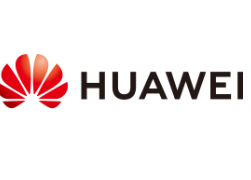Huawei unveils next-generation DCI solution

At Mobile World Congress (MWC) 2019, Huawei unveiled their next-generation Data Centre Interconnect (DCI) transmission solution.The solution aims to build an ultra-broadband, simplified, and intelligent DCI network by leveraging 600G/wavelength, OXC all-optical switching, and Network Cloud Engine (NCE) technologies.
Cloud computing and Big Data are driving a new round of ICT transformation, and data centres (DCs) are becoming new hotspots for investment. Due to space limitations, DCs are often widely distributed. Therefore, DCI is required to provide high-speed and non-blocking data transmission and switching, which forms a logical resource pool to provide consistent cloud services.
DCI has contributed to record levels of traffic and posed unprecedented challenges to technological innovation. On one hand, due to an upsurge in traffic between DCs, bandwidth becomes a bottleneck. On the other hand, ultra-large data backup and fast traffic migration between cloud DCs require network meshing for DCI. Connections in more degrees increase both fiber connections and the complexity of the optical-layer configuration.
Furthermore, the dynamic migration of cloud service virtual machines (VMs) constantly changes the DC load. Network traffic becomes dynamic and unpredictable, resulting in frequent service setup and teardown.
To address these challenges, Huawei’s next-generation DCI transmission solution integrates three innovative technologies: 600G/wavelength, OXC all-optical switching, and NCE, leading DCI networks into an ultra-broadband, simplified, and intelligent AI era:
Ultra-broadband: 600G/wavelength and 48T/fiber ultra-high capacity. Based on the algorithm accumulation of Huawei-developed optical digital signal processor (oDSP) chips, Huawei combines channel-matched shaping (CMS) and optical-layer AI neuron technologies to build 600G commercial capabilities. Single-wavelength 600G will enable ultra-high-speed cloud interconnection, thus to activate the value of ultra-broadband connection.
Simplification: The OXC all-optical switching technology builds a simplified optical layer. The all-optical backplane supports 32-degree wavelength switching and high integration. With the application of One Direction One Unit (1D1U), one board integrates the functions of multiple boards, such as multiplexer/demultiplexer, OA, and optical supervisory boards. This greatly reduces the number of boards required and simplifies internal fiber connections.
Intelligence: The NCE uniformly manages network-wide resources and enables one-click service provisioning and automatic hitless bandwidth adjustment, making the network more flexible and intelligent to adapt to rapid changes in cloud services.
At the unveiling event, Huawei invited partners German Access, and Netherland’s Tallgrass to share their thoughts on DCI development and network construction challenges.
Reindert Hommes said, “The Netherlands is the traffic exchange centre of western Europe. Cloud-based service providers and MTDCs choose Amsterdam to set up data centres.”
The CEO of the Netherlands’ Tallgrass also added, “Dozens of data centres have been built in Amsterdam. Although network meshing increases the connection density and complexity, Huawei’s all-optical switching OXC greatly simplifies fiber connections and optical-layer configurations. The traffic growth between data centres goes beyond our provisioning, using 600G technology will reduce the cost per bit and build a more competitive DCI network.”
Lothar Frischholz, the CTO of Germany’s German Access, said, “The cloudification of enterprises in Germany is occurring rapidly, and the network must adapt to the rapid migration of cloud services. DCI networks require more flexible service grooming, while the NCE provides flexible and intelligent network capabilities.”
“Huawei attaches paramount importance to DCI in next-generation networks and continuously accelerates technological innovation. Huawei’s introduction of CMS addresses the difficulties in deploying 600G commercially. AI neurons integrate more AI capabilities into the network.
In addition, OXC uses optical line printing technology to lead DCI into the era of all-optical interconnection” said Chen Wenbo, vice president of Huawei Enterprise Transmission Product Line. “We will work with customers and partners such as cloud service providers, MTDCs, and IXPs to continuously build an ultra-broadband, non-blocking, and flexible DCI network”, he added.
Huawei Enterprise is committed to bringing digital to every organisation for a fully connected, intelligent world, including government and public sectors, financial services, energy, transportation, manufacturing, and other sectors. Currently, 211 of Fortune Global 500, including 48 of the top 100, and a total of more than 700 cities all over the world, have chosen Huawei as their partner in digital transformation.
Comment on this article below or via Twitter @IoTGN
